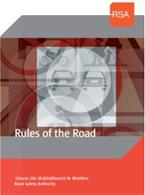When your car has aged by some years, there are a few common problems that can rise up and bother you now and again. One such issue that many drivers face is the vibration of the steering wheel while driving.
So if you are enjoying a drive and suddenly the steering wheel starts to vibrate, know that the reason can be embedded in a variety of factors related to the car’s mechanism, both major and minor.
In case you are wondering that while driving, what does a continuous vibration in the steering indicates, keep reading as we will discuss the issue in depth through this article. So without much ado let us start by looking into some of the most common causes of steering wheel vibration.
While driving, what does a continuous vibration in the steering indicate?
The steering is a major contact point between the driver and the car. In case something is wrong with the car, the first signs will be displayed on the steering wheel. While an occasional vibration or tremble can be disregarded, a regular occurrence of such an issue definitely calls for attention. For more driving lessons Dublin has to offer contact us.
Issues related to tires
Tire problems are a major cause for vibrations in the steering wheel while driving. Even a slight imbalance in the alignment of the tires can result in a vibrating steering wheel. This can start at lower speeds and increase as the speed rises.
If you have replaced your tires, the new tires need to be balanced properly so that the total weight is evenly distributed among them. Unbalanced tires can result in the further problems related to the shock absorbers, tread and other suspension or steering components.
The balance of between the tire and wheel assembly while rotation can be measured in a tire spin balancer and adjusted as needed by a mechanic. Once the wheels are properly balanced, make sure that the four tires have correct amount of inflation and no rough wear. The tires are a complex structure and any inconsistency in terms of elasticity, strength, flexibility or dimension can also affect the overall performance of the car, resulting in vibrations.
Misalignment
If you are driving frequently through rough roads full of potholes, then misalignment can be a major cause that will cause the steering to vibrate. Misalignment happens inevitably with time but you can minimise it by driving within the speed limits set for the car and by not rushing through rough roads.
Upon inspection, you might find the tire being worn out in the interior while remaining intact on the outer edges. In addition, if the car pulls in one direction even after the steering wheel is centred, it can be a case of misalignment. Aligning the car will set the wheels and axles in one common direction and eliminate the problem of vibration.
Eroded bearings
Damaged or worn out bearings in the wheel hub can be a cause for the shaky steering wheel. These bearings minimise friction during wheel rotation and also carries the weight of the car. They connect the wheel assembly with the main axle assembly and any issues in the bearing will ultimately affect the drive shaft.
This will result in vibrations in the steering column and can also be accompanied by a noise from the wheel assembly at times. While cleaning and lubricating the bearings can solve the issue, in case they are totally damaged, replacement is the only option.
Brake system issues
If the vibrations in the steering and the brake pedal occur during braking the car, it is related to brake system; usually to a case of “warped” rotors. This issue can be more pronounced when the car accelerates, turns or maintains a specific speed for some point. Since in this case the shaking occurs upon using the brake assembly and can even result in a burning odour while stopping the car, it is easier to detect and rectify the issue.
This may be a case of loose connections, worn brake cushions and shocks or weak brake discs. A proper inspection of the entire assembly along with necessary replacements and cleaning needs to be done when such issues are encountered. While inspecting, make sure that the caliper sliders and pads are checked and they can move freely, thereby eliminating any brake drag.
Suspension issues
The suspension system is designed to enhance the comfort of the passengers through an arrangement of pistons, rods and springs. The assembly takes a daily pounding from damaged roads, pieces of debris and various other factors and can get damaged with prolonged use, resulting in steering vibrations.
While this issue is not easy to detect and needs proper observation of the vibration patterns, it can be solved easily once detected. If one corner of the car is lower than the others while on a horizontal ground, it can be an issue with a spring. Similarly, there can be fluid leak from the dampers or squeaking sounds while turning, which indicates a damaged ball joint.
Handling steering vibrations in an effective manner
There are some ways to handle the steering wheel vibrations in an effective manner. Being a driver, you may detect certain issues with observation, but critical issues are best left for professionals to ensure a quick correction. Here are a few points that you can take note of to effectively resolve the issue in the best possible manner.
- Observe the severity and the frequency of the shaking by paying close attention when it occurs. This will help you to find out the root cause of the problem.
- If the steering wheel shakes at high speed and is followed by any burning smell, it is best that you head to a service centre at the earliest.
- As a rule of thumb, while investigating the reason behind a steering wheel vibration, you can start by checking the wheels and tires, followed by the alignment check and finally the suspension system.
- If the vibration occurs at a certain speed, it can be due to the fact that a wheel is bent or a tire is out of round. A wheel and tire assembly that is out of round will have a specific harmonic frequency that changes with speed. When a certain speed is reached, this frequency modulation can overcome the compensation offered by the suspension and the vibrations can be felt in the steering wheel.
- Do not leave a persistent vibration alone with the hope that it will go away on its own. It will wear out your tires, cause premature wear on suspension components and will affect your peace of mind while driving. In addition, repairs not done in time can always lead to additional repairs and towing service required will also affect your driving in a negative manner.
- For addressing complex problems, it is best to head for the dealers’ service centre or find a mechanic who can address your specific make and model competently.
- To minimise steering vibration issues, stick to the maintenance schedule recommended by the manufacturer.
Conclusion
These are the major points that will address your question that while driving, what does a continuous vibration in the steering indicate? Your car is an assembly of complex mechanical parts working together and one imbalance can trigger a range of effects that can lead to noticeable problems. So once the issue has been pinpointed, don’t hesitate to rectify the problem at the earliest.
Still looking for a reliable Driving School?

Here at National Driving School we are positioned to take you and your driving needs to the next level.
We have elevated ourselves to become a household name and the leading provider of driving lessons in Dublin

Why Choose National?
- Arrive on time, Everytime
- Pick-up & Drop-offs
- Clean & Modern Cars
- Flexible Booking Times
- Fully Qualified Instructors

Need Help?
If you need any help choosing lessons or general questions you can get in touch.
- 30 Years Experiance
- Male & Female Instructors


